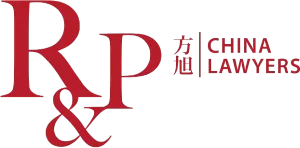- within Privacy, Litigation, Mediation & Arbitration and Tax topic(s)
- with readers working within the Oil & Gas industries
Incorporating a Chinese subsidiary (often referred to as a wholly foreign-owned enterprise, WFOE) is the most common way for a foreign company to establish a presence on the Chinese mainland. A WFOE is a separate legal entity that can enter into its own contracts and have its own employees, and is the equivalent to a limited liability company such as a B.V. in the Netherlands or a GmbH in Germany.
In this article, we summarize the procedures to set up a WFOE, and focus in more detail on three key topics for this establishment: the required certificates from the investor, deciding on the company name, and establishing the right business scope.
-
Requirements and Procedures for Establishing a WFOE in China
The key steps in the establishment process for the new company include the following:
- Obtain the notarized and legalized company/identity certificate from the investor; in addition, a notarized and legalized authorization letter indicating the investor's authorized representative may also be required.
- Determine key elements of the new company, including:
-
- Company Name: The formal Chinese company name should consist of the brand name, the location of investment, and the industry sector + Co., Ltd.
- Business Scope: description of the activities that the new company may engage in.
- Registered Address: The new company must be registered at an address where it will be incorporated. In some locations, semi-virtual addresses are available and accepted.
- Registered Capital & Capital Contribution Currency: There are no legal minima, but the investor should consider amounts with reference to expected financial needs.
- Corporate Governance, which includes appointments of the following officers:
-
- 3-13 Directors including one Chairman of the board, or one Executive Director (ED);
- one General Manager (GM);
- one Legal Representative (LR) (which is either the Chairman, the ED, or the GM);
- one or more Supervisors;
- one Financial Administrator
- After the information has been collected and materials have been received from above steps, an online application for preliminary examination to China's registration authority (Administration for Market Regulation - AMR) at the location where the company will be established will be filed. After approval of the online application, the application documents (some will be generated by the AMR system upon the approval of the online application) will be signed by the investor's authorized representative. Signed and stamped application documents can then be submitted to the AMR for issuance of the Business License. Issuance of the Business License marks the formal establishment of the company.
- Once the WFOE has been established, a number of
post-registration steps will need to be completed:
- Carve chops / stamps (including at least, the company chop, financial chop, legal representative chop, invoice chop; additional chops may be considered as well);
- Tax registration – including as general taxpayer (if applicable)
- Register with the State Administration for Foreign Exchange (SAFE) and open bank accounts (including at least the basic account, capital account + online banking)
- Record foreign trade operator with Commission of Commerce (CoC) (applicable if the WFOE will engage in import/export business)
- Register with Customs (applicable if the WFOE will engage in import/export business)
- Record with SAFE for goods trading enterprise (applicable if the WFOE will engage in import/export business)
- Apply for electronic port cards for import / export (applicable if the WFOE will engage in import/export business)
- Open social security account and housing fund account
- Apply for additional licenses (depending on the activities that the WFOE is to engage in)
-
Three Key Topics: Certificates from Investor, Company Name, Business Scope
- Investor Certificates
A key document, and usually the only one that needs to be prepared in the investor's jurisdiction, is a notarized / legalized copy of the investor's certificate which confirms the identity and legal registration of that investor in its own jurisdiction, and also confirms who is authorized to represent it in signing documents for establishment of the WFOE.
- If the investor is a corporate entity, a copy of the company
certificate from investor, duly notarized and legalized, shall at
least include the following information:
- full company name
- registered address
- directors / board members, ideally showing authorization of each director (e.g. solely or jointly authorized)
- company status (e.g. in continuous unbroken existence)
- company number/filing number
A notarized and legalized authorization letter indicating the investor's authorized representative may also be required, especially if the company certificate does not already clarify this.
Investor's authorized representative (or representatives) will be signing on behalf of the investor for the establishment procedures of the WFOE. Their presence in China is not required, as documents can be signed abroad and sent (in original, wet-ink form) to China. Note that this person (or persons) will be recorded as the investor's authorized representative also in case of future changes, unless the company provides new documents to show a new person's authority.
Note that if the investor is a natural person,their passport needs to benotarized and legalized.
- Notarization and Legalization Process
The investing entity's company / incorporation certificate or natural person identity certificate must be notarized by the notary office in the jurisdiction where it is issued, then authenticated by the Foreign Ministry and finally legalized by the Chinese Embassy/Consulate. Exact steps differ from country to country, but a key point is that the notarization step is often required by the local authorities in China – even if could be skipped in the foreign jurisdiction.
- Selecting a Chinese Company Name
A Chinese company name shall include the name of the brand / trade name, the name of the location where the company is registered, a reference to the industry, and the organizational form. For example, a formal Chinese company could be [brand/trade name] + (City) + [industry sector] Co., Ltd.
In regards to the brand or trade name, below are some different ways of translating an international company or brand name into Chinese.
- Dual adaption
The first and most ideal option is dual adaptation. With dual adaptation the Chinese name sounds the same as the original name and conveys the meaning of the original name. This is the most ideal name because it conveys meaning and sound, connecting well to the content and the international sound of the company.
- Phonetic adaptation
The name sounds the same as the original name but conveys a different meaning. Such a setup is ideal for organizations who seek a connection between the original company name and the Chinese company name. The risk of phonetic adaptation is that the meaning of the brand could be contrary to the company's goals or values.
- Meaning adaption
The third option is a name which conveys the same meaning as the original name but sounds different. Especially when selling to consumers, it is very important to create a connection between the company name and the company's meaning. The risk of meaning adaptation is that the connection to the international brand name gets lost.
- No adaptation
The last option is selecting a totally different name. The least ideal of all options, but sometimes better than a bad phonetic or meaning adaptation.
While the Chinese company name must be registered, the WFOE's English company name is not required for registration. This gives more flexibility to foreign investors; although technically the Chinese and English names should be similar, in practice some investors will for example prefer to use "China" in the name rather than "Shanghai" or another city name.
- Main Considerations for a WFOE's Business Scope
When determining what should be the company's business scope, we generally process the following steps:
- Check if the proposed business activities of the WFOE fall into Special Administrative Measures (Negative List) for Foreign Investment Access (Edition 2021) or other negative lists (depending on the location of the investment). In China, some activities continue to be closed or restricted to foreign investment.
- Propose terminology for the business scope based on the proposed activities, in accordance with official, normative terminology accepted by the local authorities.
- Review and consider if the proposed terminology triggers any special licenses (e.g. Food Business License).
Overall, the general principles for determining the business scope of a WFOE can be summarized as follows: Except for the pre-licensing items that must be approved before registration and the expressions in the Negative Lists, the business scope of a WFOE can be registered according to the actual business situation of the enterprise and the normative expression of the authority.
The content of this article is intended to provide a general guide to the subject matter. Specialist advice should be sought about your specific circumstances.


